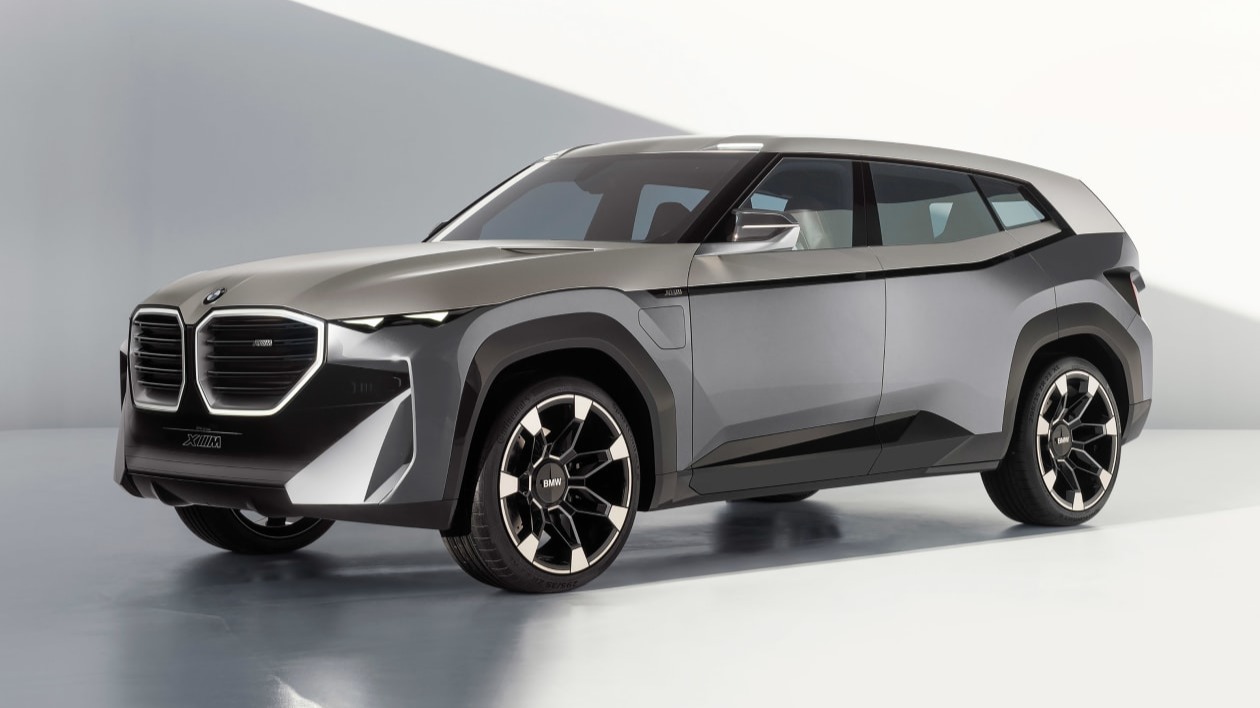The new BMW hybrid concept hints at the ugly future of electric cars

Another day, another questionable electric car design. This week, it’s BMW’s latest plug-in hybrid (PHEV) concept, the XM, under the spotlight.
Supposedly based on the existing BMW X7, the XM is the German manufacturer's upcoming coupe-SUV. It’ll be the flagship model in BMW’s M performance division, and is expected to hit showrooms as early as next year.
The brand says the XM SUV will sport an impressive 740bhp PHEV powertrain, an “emotionally-rich” sound and stand tall as “the first pure BMW M model since the legendary M1” – which is all well and good, if those credentials weren't undercut by its appearance.
Look, we’re all for innovation here at TechRadar, but the XM SUV is the sort of brutish, boxy ride that Megatron would choose to transform into – and unfortunately, it’s rather symbolic of the uninspired future of electric car design in general.
- These are the fastest accelerating electric cars in the world

There’s no doubt that both electric and hybrid automotive technology has come on leaps and bounds in recent years. Battery-powered cars are faster, cleaner and cheaper than ever before, and many major automakers have committed to converting their entire vehicle fleets into electric equivalents as soon as 2025.
Legislation now passed in many different countries will soon prohibit the sale and manufacture of traditional combustion engines, too, leaving many drivers with no option but to seriously consider the switch to four greener wheels.
Why, then, are these cars so homogeneous in appearance? There seems to be a conscious effort on the part of designers to reflect the futuristic nature of an electric car’s internal wizardry with a spaceship-like exterior that lacks any sort of personality.
Sign up for breaking news, reviews, opinion, top tech deals, and more.
Sure, more outlandish projects like the Tesla Cybertruck are deliberately robotic in design, but consumer-facing cars like the Hyundai Ioniq 5, Toyota bZ4X, Subaru Solterra, Polestar 2 and now BMW XM seem so aesthetically-banal that it makes you wish these manufacturers had just plonked an electric battery inside their existing combustion models.

Of course, beauty is in the eye of the beholder – there is no doubt that some will warm to this decidedly cold vehicular direction. And make no mistake, there have been some darn pretty electric cars in recent times (the Mercedes EQS and Audi e-tron GT come to mind).
But it’s a shame to see a brand like BMW ditch its angel-eyed heritage for an electric aesthetic that seems intentionally minimalist and lacking in any unique features beyond a comically-large front grill.
Perhaps, though, the aversion to this new direction in vehicle design simply mimics the scepticism towards every new automotive trend in years past. Long bonnets were all the rage back in the 1930s, wheel size ballooned at the turn of the last century and carbon fibre has meant today’s most expensive cars appear more like fighter jets than traditional roadsters.
Maybe, then, we’ll come to love rather than loathe this electric spaceship circus. These models are, after all, the future of motoring – and nobody likes being stuck in the past.

Axel is TechRadar's Phones Editor, reporting on everything from the latest Apple developments to newest AI breakthroughs as part of the site's Mobile Computing vertical. Having previously written for publications including Esquire and FourFourTwo, Axel is well-versed in the applications of technology beyond the desktop, and his coverage extends from general reporting and analysis to in-depth interviews and opinion.
Axel studied for a degree in English Literature at the University of Warwick before joining TechRadar in 2020, where he earned an NCTJ qualification as part of the company’s inaugural digital training scheme.